
The whale shark is the largest species of fish living in the world today.
Fish vary greatly in size. The whale shark and basking shark exceed all other fish by a considerable margin in weight and length. Fish are a paraphyletic group that describes aquatic vertebrates while excluding tetrapods, and the bony fish that often represent the group are more closely related to cetaceans such as whales, than to the cartilaginous fish such as sharks and rays.
10. Reef manta ray
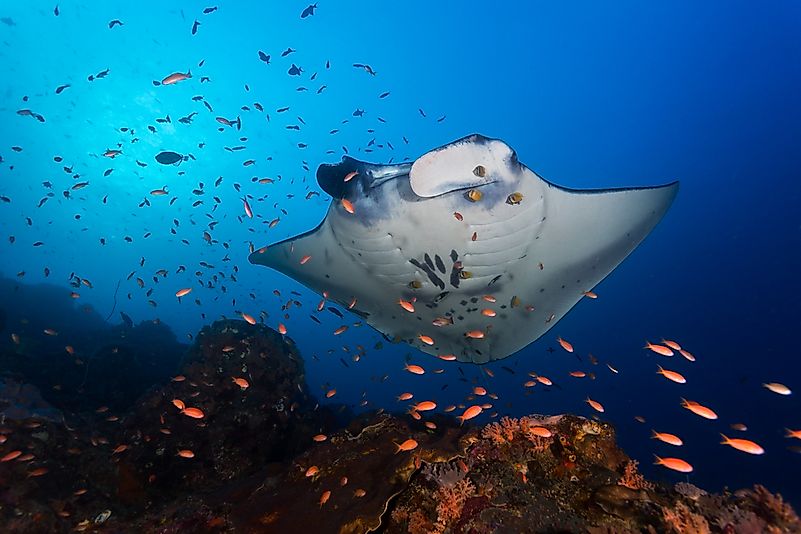
The Manta alfredi is the second biggest species of ray and the tenth biggest fish species living in the world today. The fish is generally found in the tropical and subtropical marine waters but are absent in the East Pacific and the West Atlantic. The fish can weigh as much as 1.4 tons and attain lengths of up to 5.5 m. It primarily consumes zooplankton and is a filter-feeder. Although it is rarely predated upon due to its considerable size and high speed, human activities like overfishing have adversely impacted populations of this species. The reef manta ray is thus a Vulnerable species on the IUCN Red List.
9. Beluga sturgeon
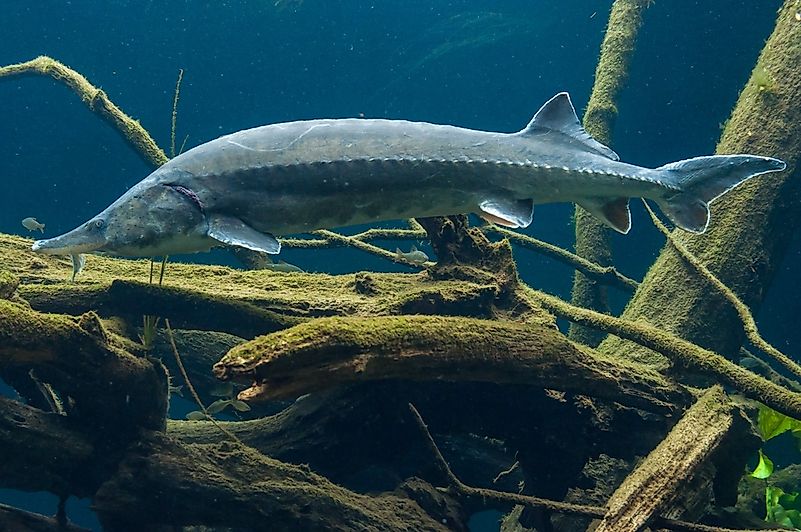
A critically endangered species, the Huso huso belongs to the sturgeon family. The habitat of the fish is restricted to the Black, Caspian and Adriatic Sea. Humans have heavily exploited this species for the beluga caviar, highly-priced delicacy. The unregulated fishing of this species and poaching activities have severely reduced the populations of this fish leading to an urgent need to protect the species from commercial exploitation. The fish is also a late maturing species with a long lifespan. It migrates upstream in rivers for laying eggs. Other fish and rarely waterfowl constitutes its prey base. The largest known specimen of the beluga sturgeon has been found to be 23.6 ft long and weigh 1,571 kg.
8. Hoodwinker sunfish
The Mola tecta have been recently discovered and hence little is known about its behavior. However, it is ranked as one of the biggest fish species known to us. The fish is found in the oceanic waters of the Southern Hemisphere where it preys on salps.
7. Sharptail mola
The Masturus lanceolatus is a mola species that lives in the world’s tropical and temperate marine waters. Since the species is elusive in nature, it is rarely sighted and hence little understood. The fish can attain a length of about 11 ft and weigh as much as 2 tons. The sharptail mola feeds on a wide variety of species including annelids, sponges, fishes, etc. The conservation status of the species is yet to be evaluated.
6. Ocean sunfish
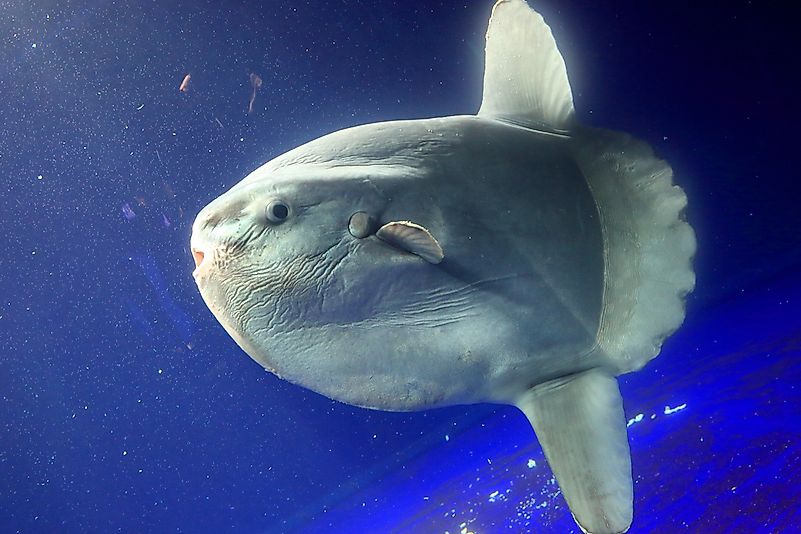
The Mola mola is the world’s largest living bony fish. Adults of this species weigh around 2.3 tons and can grow up to a maximum length of 10.8 ft. Due to their unique shape, the fish can attain a height equivalent to their length. These fish inhabit the world’s tropical and temperate oceans. They feed on massive quantities of sea jelly. Although they have few natural predators, they are subjected to great threats due to human activities like fishing. Thus, the IUCN has labeled the species as “Vulnerable”.
5. Giant oceanic manta ray
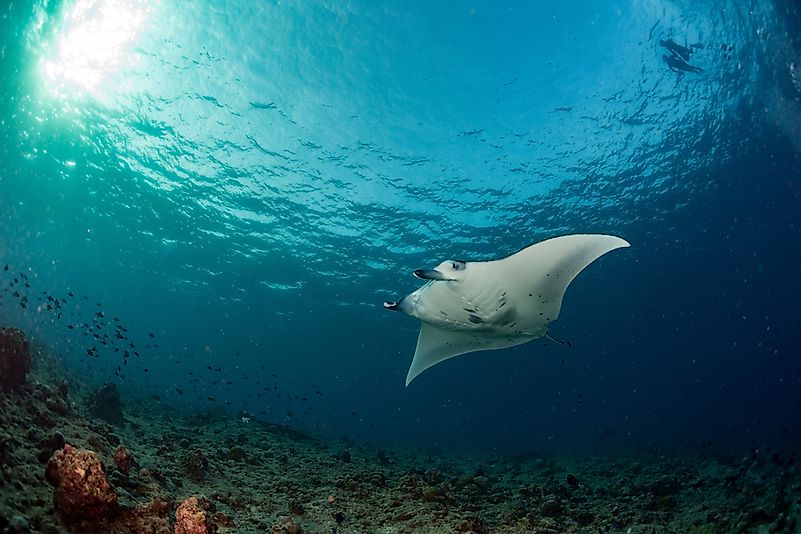
The Manta birostris is a ray species that ranks as the fifth largest fish species in the world. It is therefore the biggest species of ray and can be as big as 23 ft and weigh around 3 tons. These rays live in the tropical and subtropical oceans. The manta rays feed mainly on plankton and swim alone or in groups with other members of the same species or other marine species. Although the manta ray has few predators in the water, humans are responsible for a steep decline in their population due to irresponsible fishing practices.
4. Tiger shark
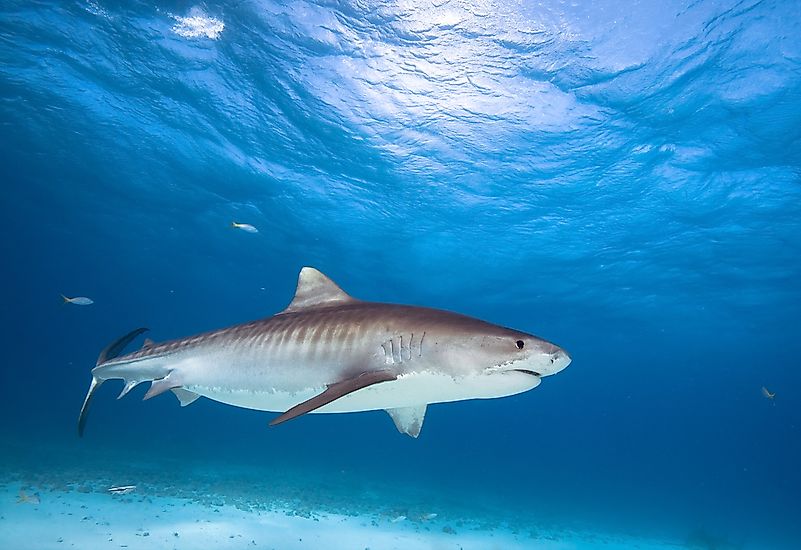
The Galeocerdo cuvier or the “Sea Tiger” is the fourth largest fish species living today. It can attain a length of more than 16 ft and weigh around 3 tons. The populations of this species are widely distributed in the tropical and temperate oceans with larger populations living around the islands in the central Pacific Ocean. Younger sharks exhibit black tiger-like stripes on the body which disappear with aging. These stripes give the species its name. The shark has the widest prey base among all sharks and feeds on a range of aquatic creatures, seabirds, and even garbage. Sadly, the tiger shark is also threatened by human activities that make it a Near Threatened species on the IUCN Red List. The tiger shark is responsible for the second highest number of attacks on humans after the great white shark.
3. Great white shark
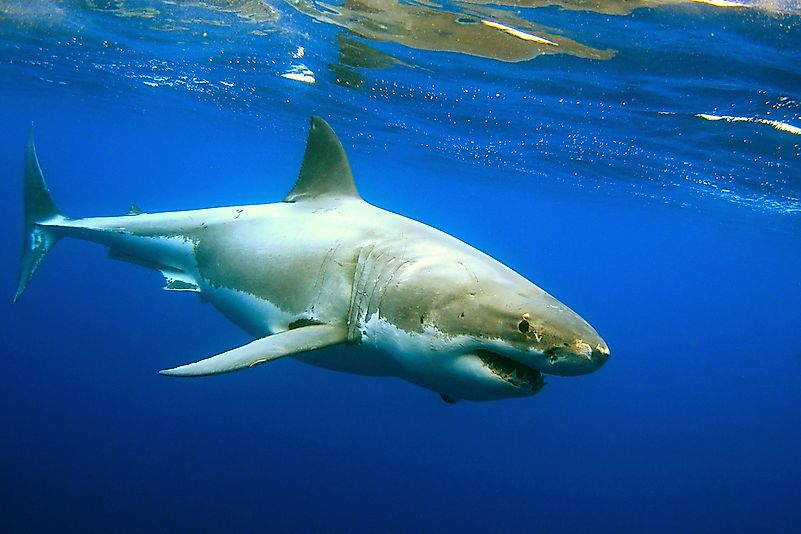
The Carcharodon carcharias is found in the coastal waters of all the oceans where water temperature ranges between 12 and 24 °C. Some specimens of the species have been found to be 20 ft long and weigh about 3.3 tons. Generally, however, individuals are about 13 ft in length. The great white shark can live for over 70 years. Most shark-related attacks on humans are associated with this shark species since it lives in coastal areas where encounters with humans are more frequent. However, humans are not the preferred prey of this species but still unprovoked attacks by the great white are quite common. These fish feed on a variety of prey species including the seabirds. The great white shark is the apex predator in its ecosystem but occasionally killer whales are known to kill these sharks. The great white shark is also a vulnerable species subjected to the same threats as the species mentioned above.
2. Basking shark
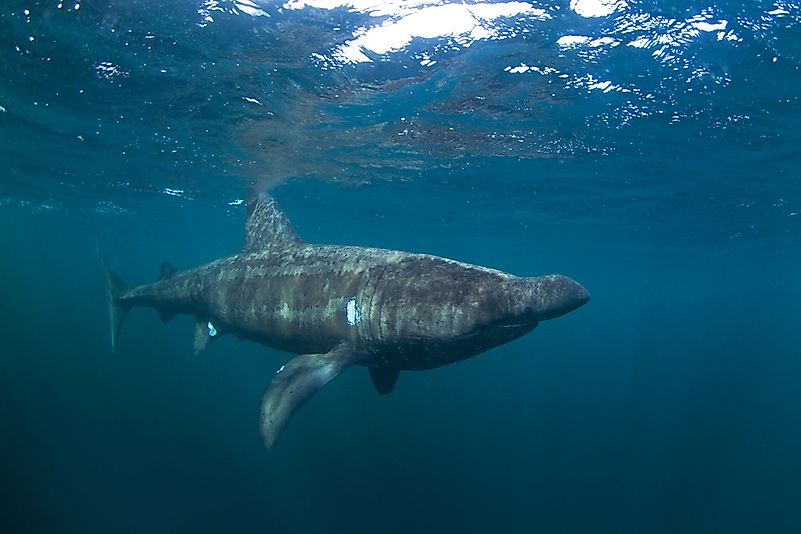
The Cetorhinus maximus can attain lengths of about 20 to 26 ft and weigh almost 19 tons, making the species the second biggest extant fish species in the world. This migratory shark species is found throughout the temperate oceans of the world. Like the whale shark, it feeds exclusively on planktons. A filter-feeder, the shark feeds near the surface of the water as if it was basking in the sun, hence the name. The basking shark has been labeled as a vulnerable species by the IUCN. Years of heavy commercial exploitation for food, shark liver oil, shark fin and also threats from fishing, bycatch losses, and more have reduced the population of the species.
1. Whale shark
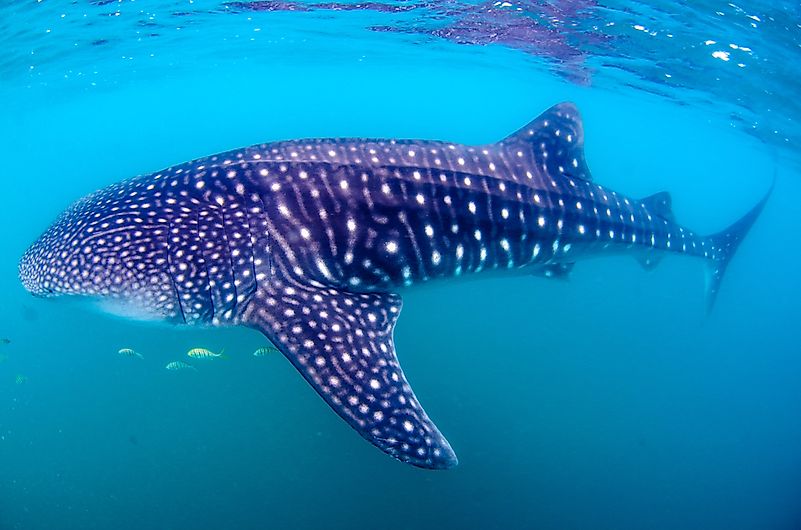
The Rhincodon typus, which can grow up to 41.5 ft and weigh as much as 21.5 tons, is the biggest fish species living today. It is also the largest extant non-mammalian vertebrate species of our planet. The whale shark is found in the warm tropical oceans’ open waters. These fish can live for up to 70 years. Despite their massive size, the fish are rarely a threat to humans. They feed mainly on plankton. The species is labeled as an endangered species by the IUCN. Bycatch losses, vessel strikes, low multiplication rate are only some of the factors threatening the future survival of the species.
What Is The World’s Largest Fish Species Living Today?
The whale shark is the largest species of fish living in the world today. The endangered whale shark can grow up to 41.5 ft and weigh as much as 21.5 tons.
Top 10 World’s Largest Fish Species Living Today
| Rank | Animal | Known maximum mass [tonnes] | Maximum length [m] |
|---|---|---|---|
| 1 | Whale shark | 21.5 | 12.65 |
| 2 | Basking shark | 19 | 12.27 |
| 3 | Great white shark | 3.324 | 7 |
| 4 | Tiger shark | 3.11 | 7.4 |
| 5 | Giant oceanic manta ray | 3.0 | 5 |
| 6 | Ocean sunfish | 2.3 | 3.1 |
| 7 | Sharptail mola | 2 | 3.0 |
| 8 | Hoodwinker sunfish | 1.87 | 2.4 |
| 9 | Beluga sturgeon | 1.571 | 7.2 |
| 10 | Reef manta ray | 1.4 | 5.5 |
source https://fourteen.online/top-10-worlds-largest-fish-species-living-today/
from Dr. Linex https://ift.tt/2utk8E8
via IFTTT
Post a Comment